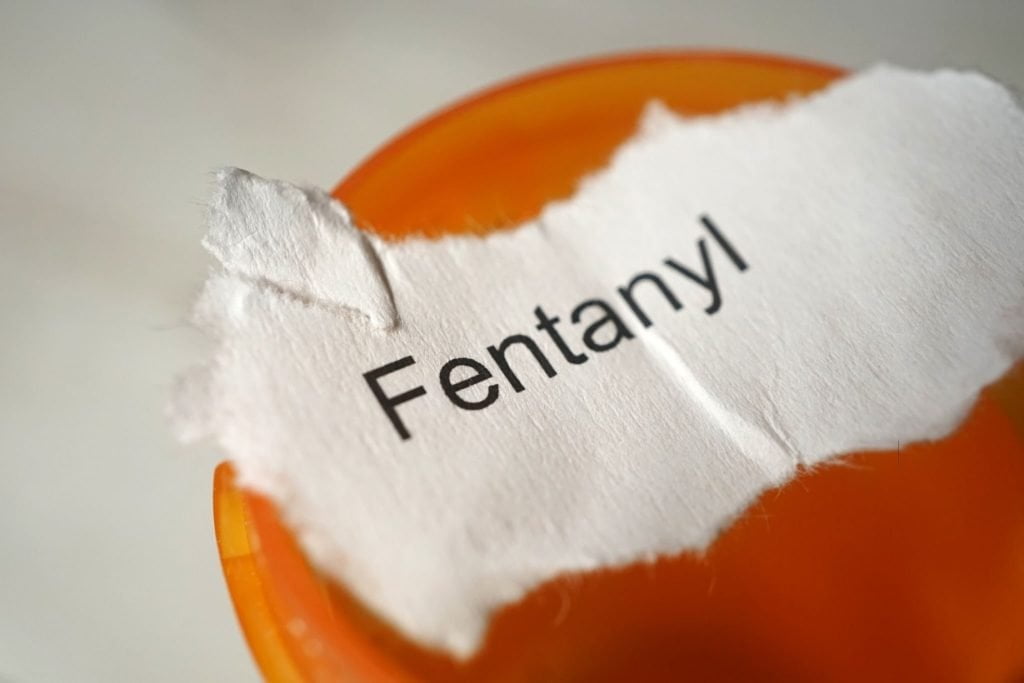Rainbow Fentanyl Use In Canada

12 Minutes
CONTENTS
Canada’s opioid crisis is ongoing, as young people, their families, and their communities continue to be torn apart by drug overdose. Fentanyl is a potent synthetic opioid—more people than ever are seeking detox treatment to fight its addictive properties.
But what is rainbow fentanyl? This new and colorful variation of the drug is said to target young people and children, often coming in the form of pills or powder. Unfortunately, it is just as addictive and deadly as its less colorful sibling.
The Government of Canada reported a total of 7,328 opiate overdose deaths occurring in 2022—81% involving fentanyl. Just two milligrams is enough to cause a fatal overdose, which is especially troublesome considering its lack of a distinct taste or smell makes it easy to mix in methamphetamine and cocaine.
Read Also About Addiction In Canada
There’s no way around it: fentanyl is here to stay and will continue to harm those who use it. Staying informed is the best way to protect yourself and your loved ones, so keep reading to get the information you need to do that.
Rainbow Fentanyl, a brightly colored and often patterned version of the highly potent synthetic opioid fentanyl, has emerged as a disturbing trend in Canada’s ongoing opioid crisis.
Its alarming spread demands a deeper understanding of the motives behind its appearance, the potential strategies of drug cartels, and the dangerous misconceptions surrounding its potency [1].
Motives Behind the Colorful Facade
The vibrant colors of Rainbow Fentanyl are not merely an aesthetic choice. Several theories attempt to explain this disturbing development:
Appealing to Children and Youth: The candy-like appearance of Rainbow Fentanyl makes it especially appealing to children and young adults, often unaware of the lethal consequences. This deliberate tactic by drug cartels aims to exploit the vulnerability and curiosity of young people.
Brand Recognition and Marketing: The distinctive colors serve as a branding strategy for drug cartels, differentiating their product from competitors and establishing brand recognition within the drug market.
Concealing Impurities: The vibrant colors may be used to mask impurities and adulterants present in the drug, making it difficult to assess its quality and potency.
Potential Strategies of Drug Cartels
The introduction of Rainbow Fentanyl reflects a calculated strategy by drug cartels to expand their market and target new demographics:
Exploiting Social Media: Drug cartels use social media platforms to share enticing visuals of the colorful drug, often accompanied by deceptive information, normalizing its use and attracting unsuspecting individuals.
Normalizing Drug Use: By manipulating the perception of harm through attractive packaging and branding, cartels aim to normalize fentanyl addiction among young people.
Exploiting Existing Vulnerabilities: Targeting communities already struggling with poverty, mental health issues, and lack of access to resources, cartels exploit existing vulnerabilities to expand their customer base [1].
Misconceptions about Color Potency Variations
A dangerous misconception surrounds Rainbow Fentanyl, suggesting that different colors represent varying potency levels. This is demonstrably false. Regardless of its color, Rainbow Fentanyl remains incredibly potent, with as little as two milligrams posing a fatal risk.
The colorful variations serve purely as a marketing strategy and do not reflect differences in potency.
In Canada, fentanyl-related deaths have surged dramatically over recent years, with a substantial impact observed across its four largest provinces. Statistical data highlights a concerning trend, showcasing increases ranging from nearly doubling to over a twentyfold rise in fentanyl-related fatalities, underscoring the gravity of the opioid crisis within the nation.
How Common Is Fentanyl Poisoning And Death
Between January 2016 and March 2023, a cumulative total of 38,514 deaths linked to apparent opioid toxicity were recorded.
For the year 2023 until March, specifically, there have been 1,904 apparent opioid toxicity deaths, averaging 21 fatalities daily.
The figures for apparent opioid toxicity deaths in Canada from January to March 2023 were relatively consistent (within 5%) compared to the same period in 2022. These numbers are preliminary and might change as death investigations conclude. Despite this, the crude mortality rates remain higher than before the pandemic.
Between 2009 and 2014, Canada recorded a minimum of 655 deaths where fentanyl poisoning was either identified as a cause or played a contributing role. This equates to roughly one fentanyl-related death every three days during this timeframe. However, this count is probably an underestimation.
During that same period, between 2009 and 2014, Canada documented a minimum of 1,019 drug poisoning fatalities. Post-mortem toxicological screenings revealed the presence of fentanyl in these cases, with more than half of these deaths occurring in the latter years, specifically in 2013 and 2014. On average, nearly two deaths associated with fentanyl occurred every three days during these two years. Yet again, this estimation is likely conservative.
Over the past six years, there has been a significant surge in fentanyl-related deaths in Canada’s four largest provinces. The increases observed throughout these years have varied widely, ranging from nearly doubling to a staggering more than 20-fold increase [2].
Geographical Distribution of Fentanyl Toxicity
The highest number of deaths were concentrated in British Columbia, Alberta, and Ontario, although elevated rates were also noted in other regions.
During the January-March period of 2023, a significant 90% of accidental apparent fentanyl poisoning deaths in Canada occurred in British Columbia, Alberta, and Ontario.
Regions with smaller populations, such as Saskatchewan and Yukon, also experienced heightened mortality rates.
Who Is At Risk
The majority of accidental apparent opioid toxicity deaths affected males, constituting 73% of the fatalities during January-March 2023.
Within both males and females, individuals aged 20 to 59 years accounted for most accidental apparent opioid toxicity deaths.
The potency of the available supply remains a significant factor contributing to the overdose crisis.
Fentanyl was involved in 81% of accidental apparent opioid toxicity deaths in January-March 2023. This percentage has risen by 42% since 2016 when national surveillance began but seems to have stabilized in recent years.
Additionally, 77% of accidental apparent opioid toxicity deaths in January-March 2023 involved non-pharmaceutical opioids only, marking a 17% increase since 2018, yet showing signs of stabilization in recent years.
The combination of multiple drugs contributes significantly to the crisis. Information from eight provinces and territories suggests that nearly all (99%) apparent stimulant toxicity deaths in January-March 2023 were accidental.
Nearly half (48%) of the accidental apparent opioid toxicity deaths in January-March 2023 also involved a stimulant.
Among the accidental apparent stimulant toxicity deaths in January-March 2023, opioids were involved in 79% of cases, cocaine in 70%, and methamphetamines in 49% [3].
Fentanyl poses a significant threat due to its potency, often leading to fatal consequences even in minute doses. Its danger lies not only in its strength but also in the clandestine variations like rainbow fentanyl that further intensify the risks associated with this drug.
Short-Term Effects: Immediate Perils
Breathing Problems: One of the most acute dangers of fentanyl is its ability to drastically slow down breathing, leading to respiratory distress and, in severe cases, respiratory arrest.
Intense Euphoria: Fentanyl’s rapid onset of action induces a powerful sense of euphoria, making it highly addictive.
Sedation and Confusion: Users often experience extreme drowsiness, confusion, and disorientation, impairing cognitive functions and motor skills.
Nausea and Vomiting: Short-term use can cause severe gastrointestinal distress, leading to vomiting and dehydration.
Effects On Heart: Fluctuations in heart rate and blood pressure are common, posing risks for those with pre-existing heart conditions [1].
Long-Term Effects: Lingering Dangers
Physical Dependence and Addiction: Prolonged fentanyl abuse leads to physical dependence and severe addiction, requiring professional intervention for recovery.
Chronic Health Issues: Continued use may result in chronic pain, weakened immunity, and gastrointestinal problems, impacting overall health.
Psychological Effects: Users often battle anxiety, depression, and mood disorders as a consequence of prolonged opioid use.
Serious Risks And Health Complications With Rainbow Fentanyl
Targeting Vulnerable Demographics: Rainbow fentanyl’s vibrant appearance and alluring forms make it particularly appealing to young people and children, posing a heightened risk to this demographic.
Increased Likelihood of Accidental Overdose: Its colorful presentation may deceive users into underestimating its potency, leading to accidental overdoses.
Challenges in Detection: Rainbow fentanyl’s non-standard appearance complicates its identification, making it harder for users and authorities to recognize its presence.
Severe Respiratory Distress: Rainbow fentanyl, akin to conventional variants, induces respiratory depression, elevating the risk of asphyxiation and respiratory failure.
Increased Fatality Rates: The deceptive nature of rainbow fentanyl contributes to higher fatality rates due to accidental ingestion or miscalculated doses [1].
The deceptive appearance of these pills masks the lethal potential of fentanyl abuse, leading to unintentional overdoses and fatalities. To effectively combat this crisis, a multi-faceted approach is necessary.
Government Initiatives
Public Awareness Campaigns: Recognizing the deceptive nature of rainbow fentanyl, government agencies have launched public awareness campaigns focusing on educating the public about the dangers of these pills. The “One Pill Can Kill” campaign, spearheaded by the Drug Enforcement Administration (DEA), aims to dispel myths about counterfeit pills and highlight the lethal consequences of even a single dose.
Enhanced Border Security: Law enforcement agencies, including Customs and Border Protection (CBP), are working diligently to disrupt the flow of fentanyl precursors and finished products entering the country. Through increased inspections, intelligence gathering, and collaboration with international partners, they aim to dismantle the networks trafficking these illicit drugs.
Investment in Research and Treatment: Recognizing the need for evidence-based solutions, government agencies invest in research initiatives focused on developing improved detection methods, treatment options, and overdose reversal medications. This research is crucial for informing effective interventions and mitigating the impact of the fentanyl crisis.
Public Awareness Campaigns
Community-Based Initiatives: Local organizations and community leaders are playing a vital role in raising awareness about the dangers of rainbow fentanyl. They organize educational events, distribute informational materials, and provide support systems for individuals and families struggling with addiction.
Social Media Engagement: Recognizing the prevalence of social media among young people, public awareness campaigns are leveraging these platforms to reach target audiences. Interactive content, educational videos, and influencer partnerships are utilized to spread awareness and promote informed decision-making.
Peer-to-Peer Education: Recognizing the effectiveness of peer influence, programs are designed to empower young people to educate their peers about the dangers of rainbow fentanyl. This approach leverages trust and credibility within peer groups, fostering open communication and promoting responsible behavior.
Harm Reduction Strategies
Naloxone Distribution: Expanding access to naloxone, an overdose reversal medication, is crucial for saving lives. Programs are implemented to distribute naloxone kits to individuals at risk, first responders, and community members, equipping them to respond promptly in the event of an overdose.
Syringe Service Programs: Providing access to sterile syringes and safe disposal options helps prevent the spread of infectious diseases among individuals who inject drugs. Additionally, these programs offer opportunities for harm reduction counseling and access to other healthcare services.
Treatment and Recovery Support: Expanding access to evidence-based addiction treatment services, including medication-assisted treatment, is essential for supporting individuals in their recovery journey. By removing barriers to access and providing comprehensive support, individuals can achieve long-term recovery and contribute positively to their communities.
Law Enforcement
Investigations and Disruption: Law enforcement agencies are actively investigating and disrupting the networks responsible for manufacturing and distributing rainbow fentanyl. This includes targeting drug trafficking organizations, seizing illicit drugs, and prosecuting individuals involved in the criminal enterprise.
International Collaboration: Recognizing the transnational nature of drug trafficking, international collaboration is essential for effectively combating the flow of fentanyl. Law enforcement agencies are working with counterparts in other countries to share intelligence, coordinate investigations, and dismantle global drug trafficking networks.
Technology and Innovation: Utilizing advanced technology and data analytics tools, law enforcement agencies are improving their ability to identify and track the movement of fentanyl. This includes monitoring social media platforms, analyzing financial transactions, and utilizing advanced detection technologies at border crossings and checkpoints.
1. Fentanyl. https://www.canada.ca/en/health-canada/services/substance-use/controlled-illegal-drugs/fentanyl.html
2. Deaths Involving Fentanyl in Canada, 2009–2014 (CCENDU Bulletin). https://www.ccsa.ca/deaths-involving-fentanyl-canada-2009-2014-ccendu-bulletin
3. Opioid- and Stimulant-related Harms in Canada. https://health-infobase.canada.ca/substance-related-harms/opioids-stimulants/
FAQs
What Makes Rainbow Fentanyl Different From Other Variants of Fentanyl?
Rainbow fentanyl stands out due to its colorful appearance, often presented in vibrant pills or powder. This variation is designed to appeal to younger demographics, especially children and young adults, posing a unique challenge in identification and awareness.
How Does Rainbow Fentanyl Affect Communities Compared To Other Opioids?
Rainbow fentanyl’s appeal to youth amplifies its impact on communities, creating a specific risk for accidental ingestion among children and teenagers. Its colorful presentation makes it less recognizable, leading to increased risks of accidental overdoses and fatalities.
What Are The Key Differences In The Target Demographics For Rainbow Fentanyl?
Rainbow fentanyl uniquely targets younger individuals and children due to its appealing and colorful presentation. This demographic specificity sets it apart from other opioids that might have a broader user base across different age groups.
How Does Rainbow Fentanyl Impact Addiction Rates Compared To Traditional Fentanyl Variants?
Rainbow fentanyl’s appeal to younger demographics escalates addiction risks among youths, potentially leading to a surge in long-term substance abuse issues. Its deceptive appearance increases the likelihood of accidental ingestion, contributing to higher addiction rates within these specific groups.
HOW THE BALANCE CAN HELP WITH Drugs
The Balance RehabClinic is a leading provider of luxury addiction and mental health treatment for affluent individuals and their families, offering a blend of innovative science and holistic methods with unparalleled individualised care.
A UNIQUE METHOD TREATING Drugs
a successful and proven concept focusing on underlying causesOur program consists of treating only one client at a time individually designed to help you with all the problematic aspects of your life. All individual treatment sessions will be held at your private residence.
more infoYour program is designed based on your personal needs. The team will exchange daily information and adjust the schedule as we go. Our therapists will work with you treating the root causes and not just the symptoms and goes beyong your stay to ensure lasting success.
more infoOur biochemical imbalance can be affected by diet and stressful life events, but it often goes back to genetics and epigenetics. We do specific biochemical laboratory testing to determine an individual’s biochemical imbalance. Combining the results of the lab tests with anamnestic information and clinical tests, we prescribe an individualized and compounded vitamin, mineral, nutrient protocol to help recover from various disease states.
more infoOur experts combine the best from psychological treatment, holistic medicine to support you individually and providing complementary therapies all coordinated from one source working complementing each other integrative.
more infoUsing latest cutting-edge technology-based therapies such as Neurofeedback, tDCS, and SSP, we can track the biological patterns of your body, giving us valuable insight into your health and well-being as well support your brain and body performance and recovery with neuromodulation.
more infoComplex trauma is often a key factor to distress mental and physical state. The Balance provides a safe space along integrated trauma treatment methods to enable healing.
more infoDrugs TREATMENT LASTING APPROACH
0 Before
Send Admission Request
0 Before
Define Treatment Goals
1 week
Assessments & Detox
1-4 week
Psychological & Holistic Therapy
4 week
Family Therapy
5-8 week
Aftercare
12+ week
Refresher Visit
Drugs Insights
latest news & research on DrugsAccreditations


































































